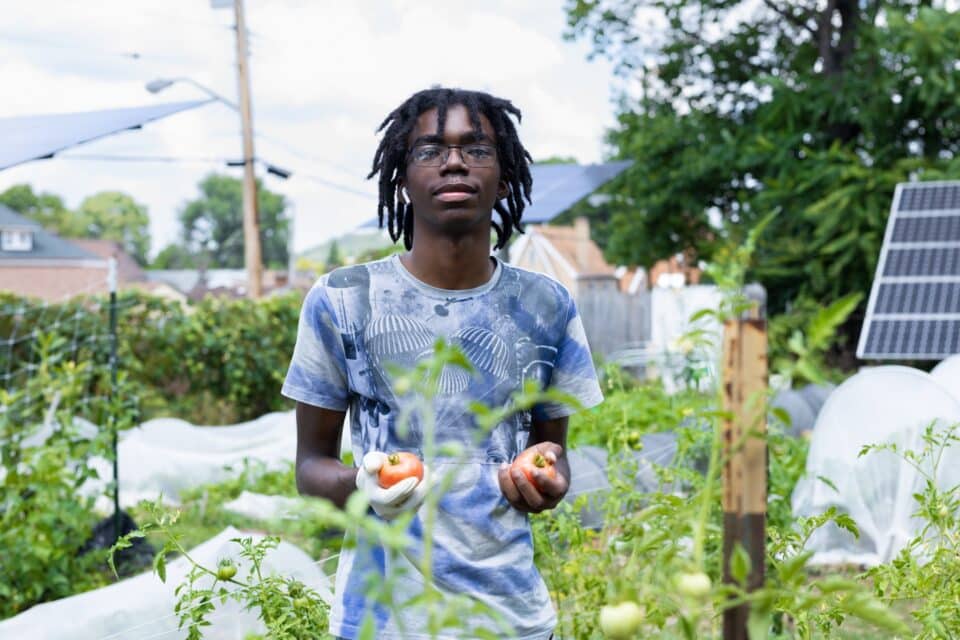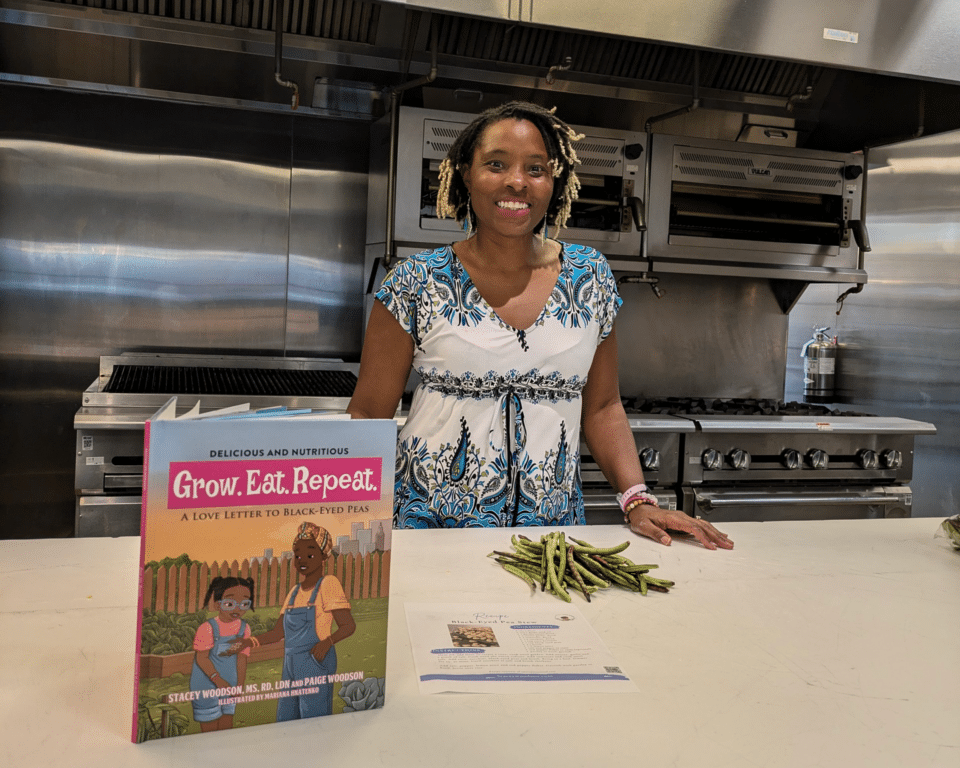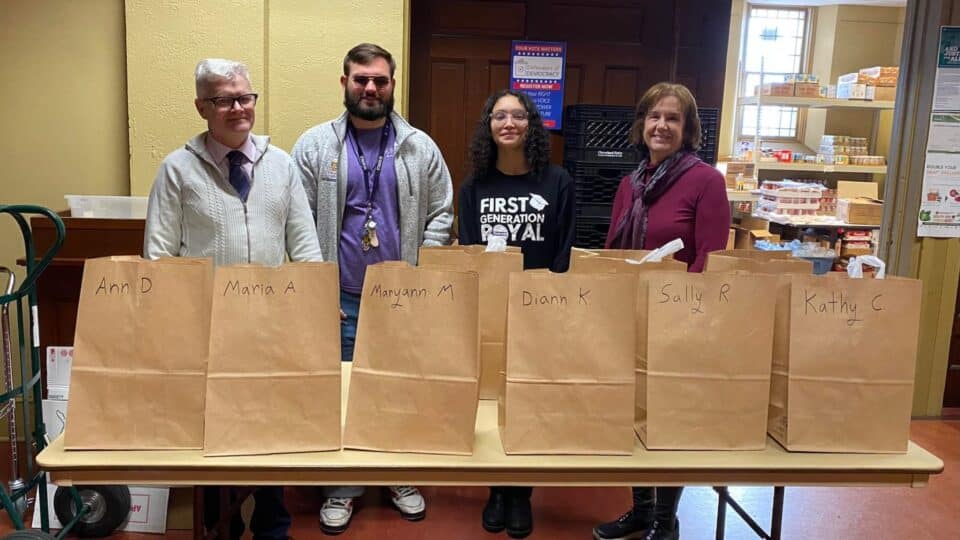The first victims of the economic fallout of the COVID-19 shutdowns were working families, many of whom found themselves laid off or furloughed not long after learning about the virus’ arrival in the US. As weeks turned into months of financial uncertainty for everyone, various human services organizations saw a huge, formerly unthinkable surge in need from the community.
One such sector was food banks and pantries, many of which are fighting for sufficient resources in the best of times. According to Feeding Pennsylvania, during a typical year, the organization’s affiliated food banks serve around two million people. That’s across the entire year. Contrast that with the 5.5 million people who the same food banks served in just the first three months of the pandemic.
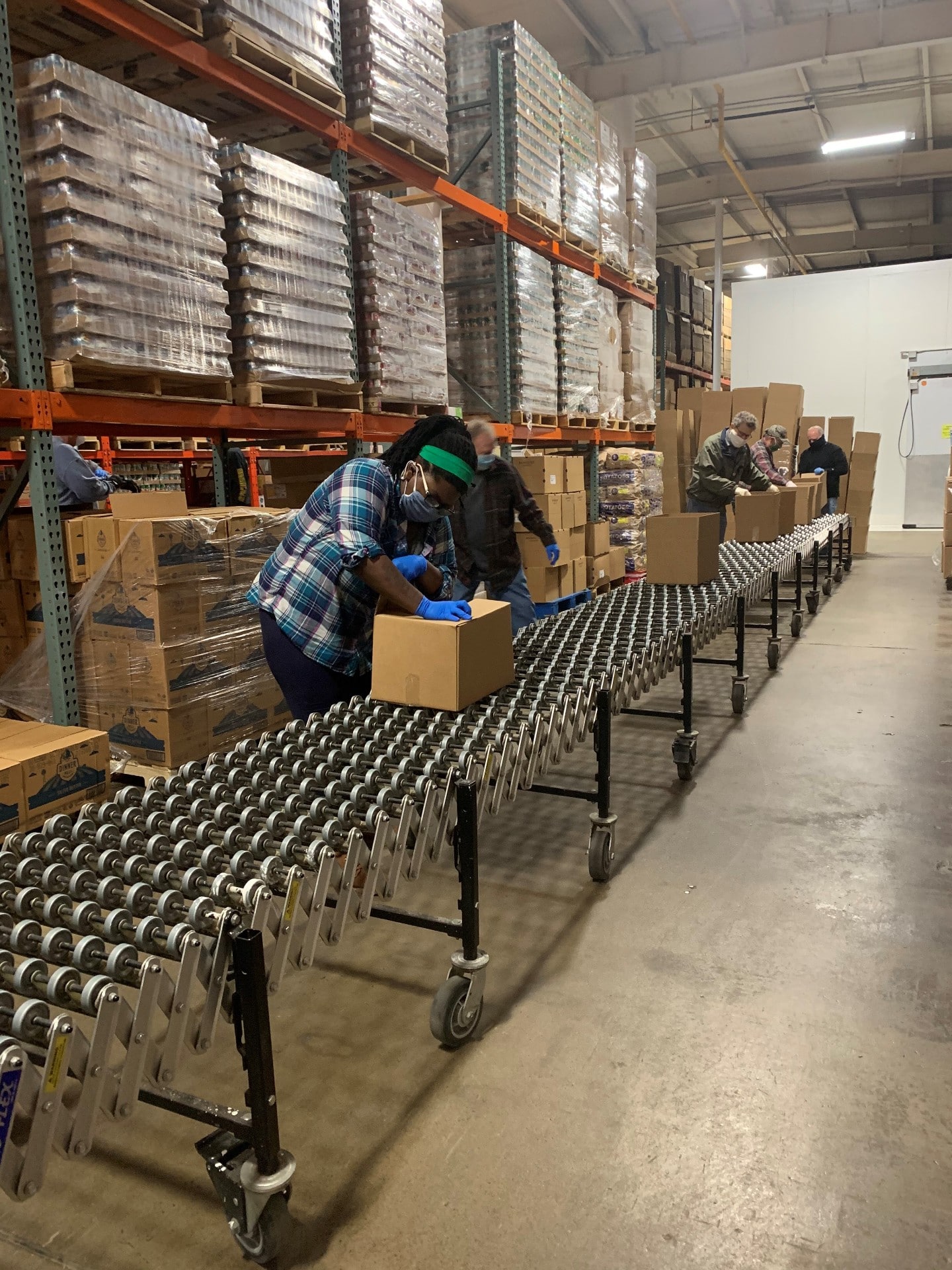
Lauren Hill, Director of Development at Westmoreland Food Bank says that the overnight shift in the economy, and the resulting instability, drove the need for food up exponentially in communities across Southwestern PA.
“There has been an overwhelming shift in the last few months, as far as what ‘business as usual’ used to be, and what it has been as a result of the COVID-19 pandemic,” she notes. “Pre-pandemic, we were serving 7,500 families a month through our pantries, and by mid-April, we saw that increase to 9,500. We’re still seeing an increasing need, and that’s about 8,500.”
Westmoreland Food Bank partners with 44 food pantries throughout the region to distribute food. Working with limited info, they had to pivot and make quick decisions to keep up with the unfolding demands of the new COVID-19 world. They decided to pre-package all of the food in their warehouse into family-sized boxes, to make the distribution and pick-up of the food as easy and safe as possible. They’ve decided to follow that model through at least the end of 2020.
“This seems to be our new motto: ‘The unknown is our largest challenge,'” Hill says. “I think we’re still in that response-mode type of mindset. We made that 9,500 mark happen because we had to, it’s one of those situations where you don’t know what you’re capable of until you have to do it. Our staff was working around the clock to make it happen, and I can’t say it was easy.”
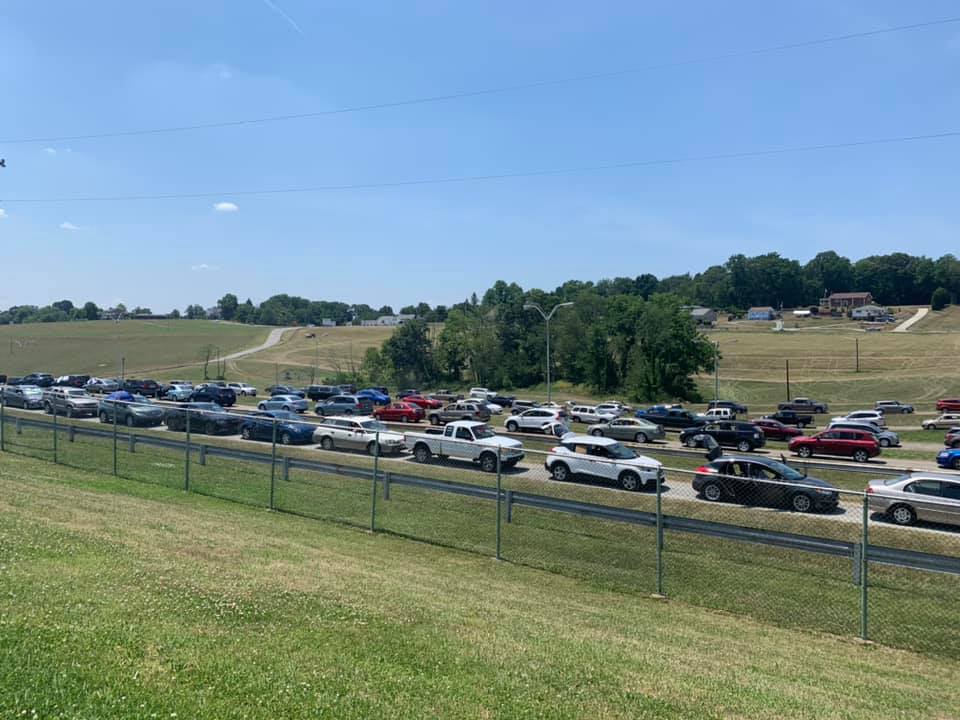
A long line of cars waiting for food distributions at a Westmoreland food pantry
To keep up with the surge in demand, Westmoreland Food Bank became more aggressive in their food ordering and sourcing, struggling with the same interruptions in the food supply chain that many of us experienced in the grocery store. To account for the massive increase in purchasing, they had to shift and reallocate funding and postpone some programming to ensure that there was enough food in stock.
“Our costs have skyrocketed, it was nothing we could really plan for, but we’ve had many generous community donors come forward who want to make a difference and help,” Hill says. “We’ve had people donate both their time as well as monetary donations. It has shown us that the community is behind us, just as we’re working to serve them.”
Though they have resumed accepting food from community food drives, Hill says that the most helpful form of support for Westmoreland Food Bank is monetary donations.
“This is the most effective way to give us the ability to respond to and meet the needs, which we all know have changed daily, sometimes hourly,” she says.
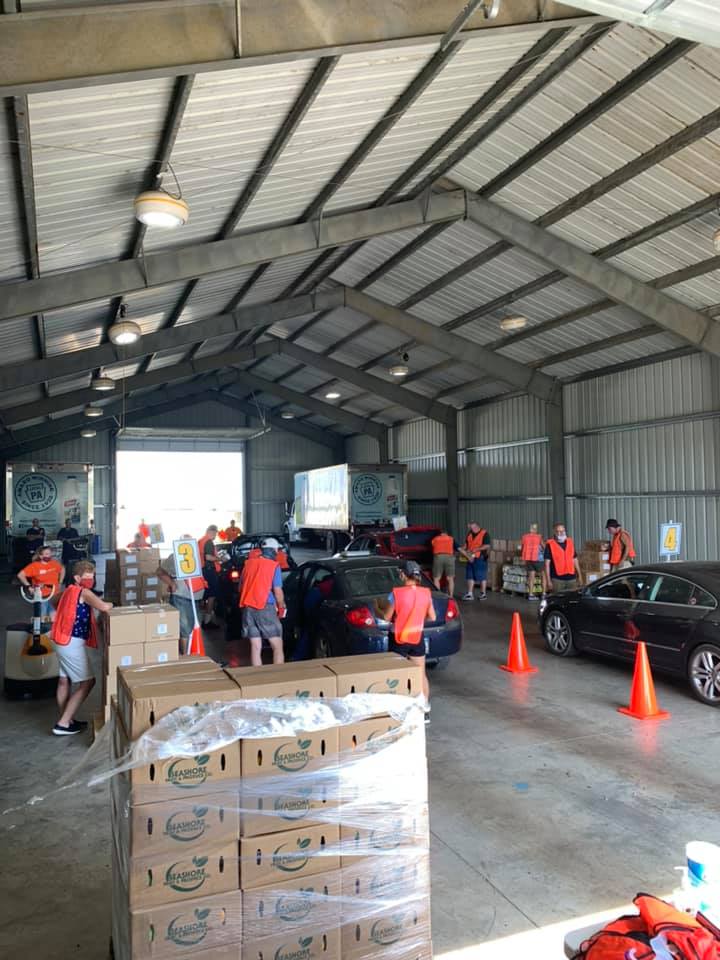
A drive-through food distribution at a Westmoreland County food pantry
Briana McGonagle, the Development Manager at Second Harvest, a food bank in the Lehigh Valley, echoes many of the same statements as Lauren Hill. She mentions the chaos in the wholesale food supply chain as a huge challenge. She also notes that many grocery stores would also frequently donate food to the food bank, and that this avenue dried up quickly.
“So much of what we receive at the food bank was from grocery stores and they didn’t have anything to donate anymore. So we saw a huge cutback, and then when food was available, the prices had just skyrocketed, so our dollar did not stretch nearly as far as it usually did,” she says. “Before COVID, we didn’t buy a lot of food, we mostly got food donated, so that was a shift for us, looking to put money into a purchasing budget.”
Second Harvest found money in their budget and purchased food, sometimes at “crazy prices,” inflated due to demand. This was the only way to be certain that their local food pantry partners could absorb the increase in need, which most reported at 45-50% more than usual. Scaling up to this level was only possible through individual and corporate donations and several large-scale grants.
Another big strain on their push to meet the COVID demand was losing their volunteers.
“We closed our doors to volunteers for everyone’s safety,” McGonagle says. “Volunteers help us complete our mission, they pack the food and help us sort everything.”
Their staff was cut down to eight people, all of whom spent each day in the warehouse packing emergency food boxes and hurrying non-stop to get the food out for distribution.
“It was a huge learning curve, we set up an area of our warehouse with a huge socially distanced conveyor belt where we can have smaller groups packing those boxes. If we’re hit with another crisis, we will be able to react more quickly.”
In the past few months, Second Harvest has decided to welcome volunteers back, with a rigorous cleansing protocol, including sanitizing stations and mandatory wearing of masks. But individual volunteers aren’t coming out, nor are the larger groups of corporate volunteers that used to donate time.
“I don’t know how we come back from that,” McGonagle says.
When it comes to the future, McGonagle says she doesn’t see the need for food diminishing any time soon.
“People lost their jobs and that can happen to anyone right now. It sliced through all parts of society. People who’d never considered a food bank were suddenly in need of food,” she notes. “We are so glad that we never had to close our doors, and are we’re very proud of that.”
Second Harvest is not accepting food drive donations currently, and, just like with Westmoreland Food Bank, McGonagle asserts that the best way people can help is with monetary donations.
“We can turn $1 into six meals. Food banks are very efficient and can do a lot with a little, and monetary donations can be translated into meals very quickly,” she says.
Now the question is: Will you step up to help out your local food bank in this time of extreme need? The strain that these truly essential organizations are feeling is real, and the longer the pandemic lasts, the more the need will compound.
We urge you not to wait until the holidays to give, and to donate what you can at this moment to help fight food insecurity in your community! To find the closest food bank to your home, use Feeding PA’s map tool to find your local member food bank.
- Photos: Westmoreland Food Bank

